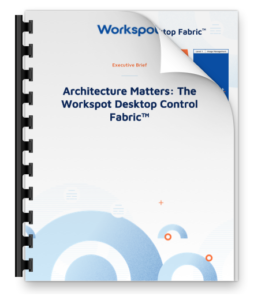IT Execs Must Grab a Chair at the Strategy Table – Here’s How
There are countless articles about the rise of the IT executive as a strategic player whose team enables the organization to pursue its business strategy through technology. That’s all fine and good conceptually, but how do these technology leaders actually grab that seat at the table while the business strategy is being debated and formulated, rather than being the technology “afterthought”? If you live and breathe technology, you know that it just makes good sense for IT to be at the core of strategic planning because technology is the foundation on which a company will achieve a competitive advantage. But sometimes that is easier said than done.
IT Leaders as Business Strategists
In some industries, IT leaders are already part of those conversations, but in others, they have yet to secure their seat at the table. For whatever reason, the culture in those organizations has not evolved in that way, just as some industries adopt technology more slowly than others. So for those technology leaders, how do they ensure that the IT team becomes an intrinsic part of the business planning process?

Recently I participated in a round table discussion among IT executives in the architecture, engineering and construction (AEC) industry, organized by Andy Knauf, CIO of Mead & Hunt, a well-known US engineering firm. The top concern of these talented people? How to get a seat at the table of their respective organizations’ strategic planning process. I’ve been inspired by Andy, who I’ve come to know well recently. He began his career in the IT department 28 years ago as the first IT technician at Mead & Hunt. He has worked his way to the top, not only as the CIO of his organization, but also as a technology visionary for his industry who is helping other IT executives achieve more success by imparting his knowledge. I want to share what his journey to CIO looked like and how he was able to become comfortable in that chair as a respected leader.
Balancing Risk with Business Impact
Information technology changes so fast and can be so complicated – it is truly daunting. Yet there is the right combination of risk-taking and proving value that comes with the CIO territory; the tricky part is in getting the balance right. Gartner Research reports in its 2018 Gartner CIO Agenda Survey that top CIOs already focus more on performance metrics around business outcomes than metrics for IT delivery. Sure enough, along Andy’s journey through the IT ranks, every step of the way he was able to prove that the technology decisions being made were having a positive impact on the firm’s growth objectives.
When Andy joined the company they had a single office, and 28 years later they have 30+ offices across the country with more than 700 employees performing massive construction projects nationwide. He was thrown impossible growth challenges and never backed down. He found creative ways to support acquisitions of new companies with their remote employees. Over the years, Andy replaced phone switches with Skype VoIP services, wall to wall. He also retired Exchange servers and deployed Office 365 for apps and email, including One Drive for files. He also introduced file lock-n-sync across design offices for engineers so they could collaborate on designs while never overwriting each other’s work. And recently – he has deployed Workspot and now delivers Windows 10 NVIDIA GPU-accelerated workstations in Azure to designers anywhere in the world. It’s amazing the business agility he’s brought to his company.
Here’s his latest example: Hire 5 remote engineers, lease an office, have a cable modem installed, ship $500 laptops, engineers open their new laptops, run the Workspot Client, and remotely connect to their massively powerful Windows 10 workstations in Azure! They’re only 25ms away from Azure, and they’re getting multi-gigabit network speeds in Azure between their design apps (like AutoCAD and Revit) and their data files. From “winning the project” to “5 engineers collaborating on designs” took 3 weeks, and all setup and config was performed remotely; no IT travel required!
Go Digital or Go Home
While AI and machine learning get all the press and the hype, most CIOs have priorities around cloud computing and big data analytics – the first real steps in digital transformation. These are the technologies they believe can have a business impact today, while also preparing them to take advantage of AI and ML later. But whatever your priorities and whichever technology is required to advance your organization’s business goals, be in front of it. Many CIOs have had to write their own ticket to the top; they’ve redefined their own role to be customer- and business-centric, and it’s taken them straight to the top of their game. And they’ve had to take calculated risks to introduce new technologies that remove complexity and reduce costs. Don’t be afraid to move beyond the decisions of the past. As a true thought leader, you will question, envision, empower, simplify, work smarter and do more with less. You’ll spot emerging trends early, find the next-gen technologies and inspire your team to reach for bigger and better results.
At the end of the day, you’ll enable and empower your workers with the technology required to make them more efficient and the business more agile. By always innovating, you can give your company a leap forward in competitive differentiation – and claim that seat at the table!



